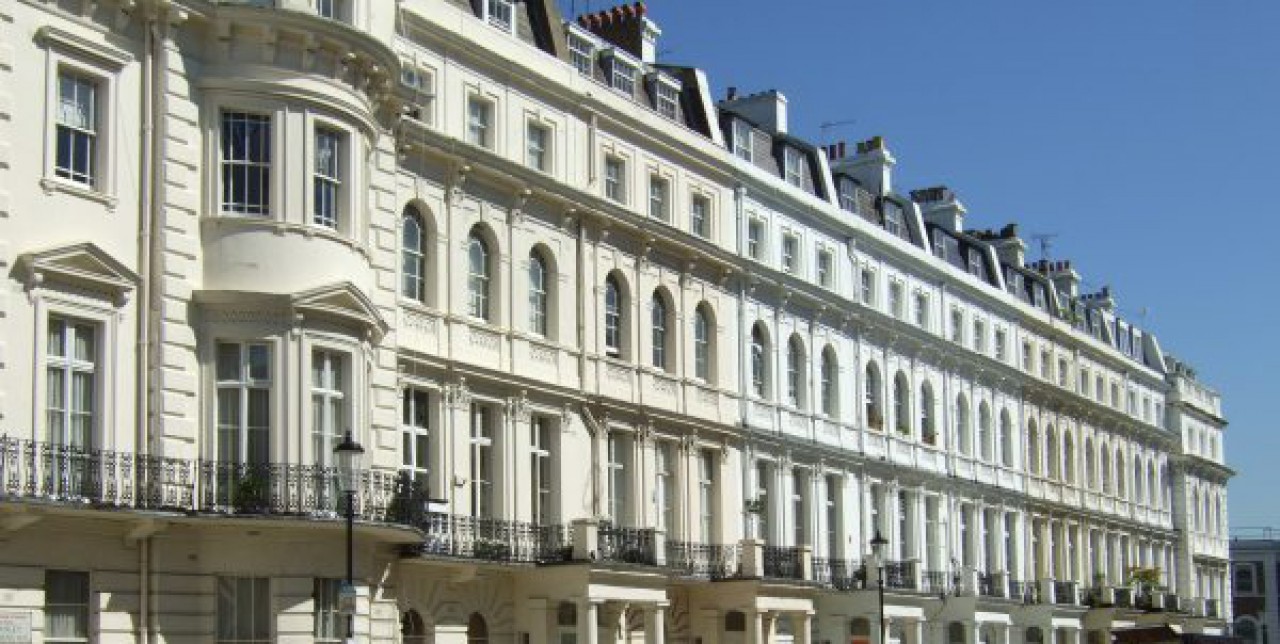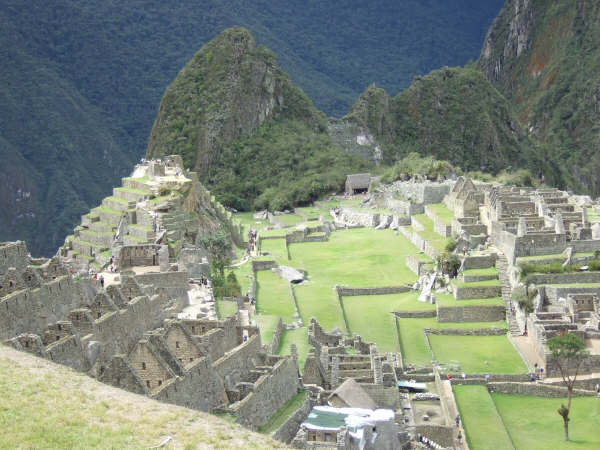Competing Coca-Cola Signs
After two pleasant days at sea, M/S Veendam sailed down the River Plate and arrived at Buenos Aires.
We were, of course, not strangers to this city having visited for one week in 2008. We left the Argentine capital on that occasion with mixed memories – and with lighter pockets – having fallen victim to a pick-pocket early in our visit.
Nevertheless, there was something somewhat exciting about returning to BsAs. It was not long before we began seeing familiar sites and we were soon attuned once again to the rhythm of the city.
Our visit was highlighted by a tour of two football stadia, one at La Boca and the other at River Plate.
La Boca is an intriguing district. Populated by the working class, the neighbourhood features narrow laneways and low rise buildings of bright pastel colours. The walls are decorated with murals and life size mannequins of famous figures and local identities.
And there was one Argentine hero who dominated the region: Diego Armado Maradona.
As soon as you walk into La Boca, the ghost of Maradona is everywhere. I use the word `ghost’ because we are talking the Maradona of 1986 and 1990, not the largely reviled imposter who now coaches the national side. According to our guide (and friend), Isabel, everybody is now against him. To use her words, whilst once `a great footballer’ Diego’s `commonsense is… limited’.
After a tour of the streets of La Boca – our pockets pre-emptively empty, our fingers free of jewellery and our bag held close to my chest – we visited the home stadium of the local football team, Boca Juniors.
The `Bombonera’ – or `chocolate box’ as the stadium is known – is a daunting arena. Once again, the ghost of Maradona dominates. The shops adjacent to the entrance feature murals of the local hero dribbling the ball, dodging opponents and celebrating a goal. Even the iconic `Hand of God’ goal from the 1986 World Cup is proudly celebrated.
Once inside the stadium, however, it is the team which is feted. It’s an intimidating place to those – like opposing players – who are unwelcome. A true football stadium, there is precious little space between the sides of the playing surface and the first row of blue and gold seats. Moreover, the incline of the concourse area and the grandstands above is remarkably steep. A spectator sitting in the back row of the highest stand would feel as though he was hovering directly above the players.
Even whilst empty, we could feel the passion of the crowd; clad in the blue and gold of their team and waving giant flags. We could only imagine how the grandstands would reverberate when the stadium was full.
The home stadium of Boca’s arch rivals – River Plate – could not be more different.
Whilst Boca Juniors are the working class team, River Plate is supported by the rich and famous. Whereas the streets surrounding the `Bombonera’ are narrow and cluttered, one approaches River Plate’s stadium along a pleasant boulevard lined with trees. We could see young Argentine gentlemen playing tennis in the parkland which surrounded the arena.
Inside the stadium, it was not hard to imagine the atmosphere being as intimidating for Boca fans as the `Bombonera’ would be for River Plate supporters. Indeed, River Plate’s stadium holds 70,000 spectators whereas only 50,000 can cram into a Boca Juniors home game. However, the presence of an athletics track around the soccer field provides a buffer between players and fans which does not exist at La Boca.
Remarkably, coca-cola sponsors both stadia. River Plate’s colours are red and white. As such, the traditional coca-cola logo fits in well with the red and white seating of their arena.
Given the intense rivalry which exists between the two football clubs, red and white is banned from the blue and gold seating which dominates the `Bombonera’. So how do coca-cola advertise their product? All the coca-cola logs are painted in blue and white!
The Isle of Pines Curse Strikes Again
When I first saw the itinerary for this voyage, I noted that we were scheduled to dock at Montevideo after Buenos Aires.
For some reason, I was looking forward to visiting Uruguay and strolling around its capital. I’m not sure why. Perhaps it was because I saw Uruguay as Argentina’s little brother. Both nations, after all, play football in jerseys featuring sky blue. Or perhaps it was because there was something enticing and exotic about the name, `Montevideo’. It truly rolls off the tongue.
Unfortunately, it was not to be.
We awoke early to the sound of waves thumping the side of our vessel and the sensation of our bed rocking furiously. We could hear the wind howling outside.
Despite the weather, we showered and got dressed, as planned, and headed down to the dining room for an early breakfast. Looking outside, we could see the buildings of Montevideo on the distant horizon. It was obvious we were not going to dock at 8am as scheduled. Indeed, it seemed that M/S Veendam was stationary.
At last the Captain’s announcement finally came. As we had anticipated, the weather had rendered docking our vessel dangerous. Indeed, the Port of Montevideo was, at that time, closed to all shipping. Nevertheless, we hovered off the coast for an hour or so – along with a multitude of other vessels of various sizes – and waited to see whether the wind would die down. Apparently, our shipload of tourists holding American dollars had priority over other boats carrying such unimportant cargo such as coal or electrical goods.
Finally, after an aborted attempt to approach the Port, the Captain announced that the Port was officially cancelled and our two day voyage to Rio de Janeiro would now take three days.
So Huckleberry B and I added Montevideo to the list – along with the Isle of Pines – of destinations we have admired from a distance but not visited.
It could, however, have been worse…
At lunch, we met a couple from California who were joking about having to wear the same clothes for three days. Assuming that their luggage had not caught up with them from their home town, Huck B asked what calamity had befallen them. Laughing, the couple shook their heads ruefully and explained that they knew exactly where their luggage and all their clothing could be located; safe and sound in their plush hotel room in Buenos Aries!
The couple explained that they had always planned to terminate their cruise in BsAs rather than Rio. However, employing some very impressive persuasive skills, they convinced the staff on board M/S Veendam to allow them to travel overnight to Montevideo. Their plan was to disembark in the Uruguayan capital, take a tour of the town and catch the ferry service back to Buenos Aires where their hotel room – and their luggage – would quietly await them.
No doubt it sounded like a good plan at the time!
Now the couple found themselves on board M/S Veendam for an additional three days whilst their expensive hotel room in BsAs remained unoccupied. Moreover, they have to make urgent arrangements for both a flight from Rio to BsAs and – more importantly – a visa to enter Brazil.
Clearly the consequences of the Isle of Pines curse can be both wide ranging and unexpected.
Moonriver


